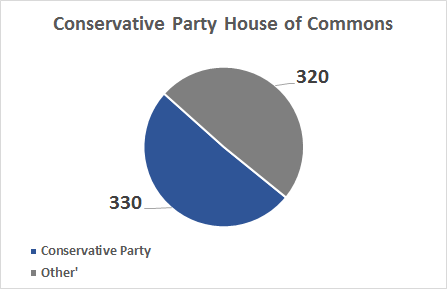Check out our DailyFX Q3 Forecast for the British Pound "Brexit is a Game Changer, but Timeline (or lack thereof) the Issue"
Theresa May is officially in line to become the next Prime Minister of the UK on Wednesday, July 13, 2016, after fellow Tory Andrea Leadsom announced she was taking her horse out of the running and David Cameron announced his immediate departure. While May initially became involved in politics in 1986, she only became a Member of Parliament in 1997. In 2002, she became the first female Chair of the Conservative party and in 2010, was elected Home Secretary, a position she has held ever since.
May received substantial support from her party in the leadership race, polling 199 to Leadsom’s 84 in the last round of MPs’ votes. The race to succeed Cameron was supposed to last through the summer culminating in the Conservative Party conference in September, but Leadsom’s withdrawal from the race has all but concluded the process. Now, the ascendant prime ministerwill be under pressure to fulfill her promise to lead the nation’s exit from the bloc.
What does this mean for Brexit and Article 50? Unlike her predecessor, Cameron, who has still expressed wariness to trigger Article 50, May has publicly stated that the voters’ will needs to be respected that “Brexit means Brexit.” Likewise, warding off calls from Labor, the Greens, and the LibDems for snap elections, May said that there shouldn’t be another general election until 2020.
She also shared her vision of uniting the country and forming a strong new positive vision for the future of UK. However, she has pledged not to trigger Article 50 immediately upon taking the job. She wants to wait at least the end of the year, in an attempt to negotiate terms with the EU that would preserve UK’s access to European markets without having to allow unfettered immigration. However, the EU leadership is unlikely to agree to such a deal, as German Chancellor Angela Merkel has said that there will be no informal pre-negotiations; and earlier today, the EU Commissioner Pierre Moscovici said May must “accelerate” the Brexit process and bring forward the Article 50.
It seems that May, despite being for ‘Remain’ ahead of the June 23 referendum, is up to the task of fulfilling Brexit. In her statement yesterday, she went on to say “There will be no attempts to remain inside the EU. No attempts to rejoin it by the back door. No second referendum. The country voted to leave the European Union, and as prime minister, I will make sure we leave the European Union.”
Her leadership means a faster pace to Brexit and the triggering of Article 50, but faster is a relative term. She will certainly be faster and more aggressive compared to Cameron, but she will still have to work through Parliament to gain a majority vote to trigger Article 50. And, while it is true that the majority of Parliament is of her party (330/650 MP’s); there were many Tories who were not for Brexit. She would have to rally not just other parties but hers as well. A difficult task ahead indeed, with 463 MPs having said they were for ‘Remain’ versus the 150 MPs who said they were for ‘Leave’ ahead of the June 23 vote.


Needless to stay, the path to Brexit is all but clear, even as May emerges from the UK political fracas as the next prime minister. The state and structure of the UK's relationship in the EU won't be clear for a long-while, and businesses simply can't afford to wait that long. Markets may be calmer today, but a lack of political clarity in the UK will weigh on the British Pound, which now has implications for risk markets globally.
Chart 1: GBP/USD 4-hour Chart (June 12 to July 12, 2016)

Read more: Brexit Fears Swirl Around Euro, Drag Italian Banks into Limelight
--- Written by Christopher Vecchio, Currency Strategist, Omar Habib, DailyFX Research and Summer Xing, DailyFX Research
To contact Christopher Vecchio, e-mail cvecchio@dailyfx.com
Follow him on Twitter at @CVecchioFX
To be added to Christopher's e-mail distribution list, please fill out this form






